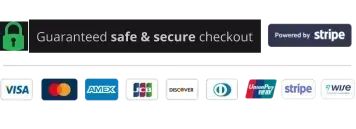Overview
The demand for technical expertise, particularly for an IT Support Technician, has skyrocketed. The digital landscape has reshaped how businesses function, making technical prowess a paramount skill.
This course, dedicated to the IT Support Technician, encapsulates that spirit of change by navigating the complex intricacies of IT infrastructure. With comprehensive modules ranging from operating systems, software tools, and risk management to cybersecurity essentials, this course paves the way for aspiring technicians to stay ahead of the curve in IT support.
Join us today and shape your tomorrow as a certified IT Support Technician.
How will I get my certificate?
You may have to take a quiz or a written test online during or after the course. After successfully completing the course, you will be eligible for the certificate.
Who is this course for?
There is no experience or previous qualifications required for enrolment on this IT Support Technician. It is available to all students, of all academic backgrounds.
Requirements
Our IT Support Technician is fully compatible with PC’s, Mac’s, Laptop, Tablet and Smartphone devices. This course has been designed to be fully compatible on tablets and smartphones so you can access your course on Wi-Fi, 3G or 4G. There is no time limit for completing this course, it can be studied in your own time at your own pace.
Career path
This comprehensive IT Support Technician course is ideal for anyone who wants to take their professional development to the next level and fast track their career in any of the following roles:
- IT Trainer
- IT Manager
- IT Support Manager
- IT Support Associate
- IT Support Technician
- IT Customer Support
- IT Support Specialist
- Technical Support Engineer
- IT Technician
- IT Coordinator
Course Curriculum
- 7 sections
- 14 lectures
- 00:00:00 total length
-
What is an Operating System
00:48:00 -
Configuring the Operating System
00:06:00 -
What is an Application
00:10:00 -
Using Control Panel
00:18:00 -
Software and Concepts
00:11:00 -
Licensing
00:06:00 -
Using Software
00:07:00 -
Software Tools
00:10:00 -
Software
00:14:00 -
Hardware, Devices, and Peripherals
00:06:00
-
Hardware and Peripherals
00:07:00 -
Storage
00:12:00 -
Connectivity Devices
00:05:00 -
Network Components
00:09:00 -
Identify the Importance of Risk Management
00:11:00 -
Assess Risk
00:13:00 -
Mitigate Risk
00:24:00 -
Integrate Documentation into Risk Management
00:15:00 -
Classify Threats and Threat Profiles
00:08:00 -
Perform Ongoing Threat Research
00:13:00 -
Resources that Aid in Research of Threats
00:03:00 -
Implement Threat Modeling
00:10:00 -
Assess the Impact of Reconnaissance Incidents
00:11:00 -
Performing Reconnaissance on a Network
00:07:00 -
Examining Reconnaissance Incidents
00:08:00 -
Assess the Impact of Social Engineering
00:11:00 -
Assessing the impact of Social Engineering
00:07:00 -
Assessing the Impact of Phishing
00:03:00 -
Types of Wireless Attacks
00:30:00 -
Intrusion Monitoring
00:08:00 -
Wireless Security Risks
00:22:00 -
Authentication Attacks
00:21:00 -
Rogue Devices
00:04:00 -
Public Hotspots
00:07:00 -
Wireless Security Monitoring
00:21:00 -
Device Tracking
00:18:00 -
WLAN Security Infrastructure
00:38:00 -
Management Protocols
00:23:00 -
Other RADIUS Solutions
00:16:00
-
Introduction
00:30:00 -
Child Safety Online
01:00:00 -
Secure Payment Sites
01:00:00 -
Online Banking
00:30:00 -
How To Keep Your Password Safe
00:30:00 -
Common Scams
01:00:00 -
How I Got Pharmed
01:00:00 -
Virus Protection
01:00:00 -
Self Maintenance
00:30:00 -
Personal Information Online
01:00:00 -
Is The Internet Safe?
00:30:00 -
Importance of Cyber Security
00:30:00 -
Spyware Can Destroy
00:30:00 -
How Does Spyware Spread?
01:00:00 -
How To Remove Spyware
01:00:00 -
Anti Spyware Program
01:00:00 -
The Anti Anti-Spyware Programs
00:30:00 -
Research And Learn More
00:30:00 -
Choosing The Best Anti Spyware Tool
01:00:00 -
Computer Security And Spyware
01:00:00 -
The Programs To Avoid
00:15:00 -
Is It Legal?
00:30:00 -
Checklist Of Protection
00:15:00 -
The Information Security Cycle
00:37:00 -
Information Security Controls
00:36:00 -
Authentication Methods
00:09:00 -
Cryptography Fundamentals
00:56:00 -
Security Policy Fundamentals
00:11:00 -
Social Engineering
00:32:00 -
Malware
00:25:00 -
Software-Based Threats
00:22:00 -
Based Threats
00:39:00 -
Wireless Threats and Vulnerabilities
00:43:00 -
Physical Threats and Vulnerabilities
00:09:00 -
Manage Data Security
00:47:00 -
Manage Application Security
00:55:00 -
Manage Device and Host Security
01:08:00 -
Manage Mobile Security
00:10:00 -
A Risk Analysis
00:17:00 -
Implement Vulnerability Assessment Tools and Techniques
00:05:00 -
Scan for Vulnerabilities
00:27:00 -
Mitigation and Deterrent Techniques
00:19:00 -
Respond to Security Incidents
00:23:00 -
Recover from a Security Incident
00:10:00
-
OSI Layers
00:44:00 -
LANs and WANs
00:14:00 -
Network Types
00:07:00 -
Transmissions
00:36:00 -
Cables
00:41:00 -
Fiber Optics
00:17:00 -
Converters and Connectors
00:27:00 -
Wireless Security
00:15:00 -
Authentication.prproj
00:21:00 -
Wireless Security Threats
00:30:00 -
TACACS
00:10:00 -
Keys
00:26:00 -
RADIUS
00:07:00 -
VPN Technologies
00:16:00 -
Tunneling Protocols.prproj
00:05:00 -
Acceptable Use
01:00:00 -
Common Problems
00:32:00 -
Troubleshooting
00:28:00 -
Network Technician Tools
00:46:00 -
Physical and Logical Issues
00:19:00 -
Open or Closed Ports
00:09:00 -
ARP Issues
00:13:00
-
Core Concepts in Healthcare IT
00:06:00 -
EMR EHR Issues
00:05:00 -
Regulations, Standards, and Stakeholders
00:14:00 -
HIPAA Controls and Compliance
00:08:00 -
Roles and Responsibilities
00:10:00 -
Manage Communication and Ethics Issues
00:15:00 -
Legal Best Practices, Requirements, and Documentation
00:09:00 -
Medical Document Imaging
00:04:00 -
Sanitation Management
00:03:00 -
Computing Essentials
00:05:00 -
Networking
00:33:00 -
Manage Servers and Software
00:27:00 -
Hardware Support
00:14:00 -
Set Up a Workstation
00:08:00 -
Troubleshoot Basic IT Issues
00:15:00 -
Troubleshoot Medical IT Issues
00:20:00 -
Implementation of an EMR EHR System
00:34:00 -
Change Control
00:08:00 -
Manage Physical and Logical Security
00:36:00 -
Implement Security Best Practices and Threat Mitigation Techniques
00:13:00 -
Manage Remote Access
00:06:00 -
Manage Wireless Security
00:15:00 -
Perform Backups and Disaster Recovery
00:16:00
-
Mock Exam- IT Technician Complete Training
00:30:00
-
Final Exam- IT Technician Complete Training
00:30:00











 ALL COURSES FOR - £99
ALL COURSES FOR - £99 
